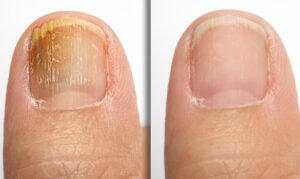Arm Flab
Perhaps the real reason that the Venus de Milo is now armless is because she had jiggly arm flab—and art patrons of the Hellenistic period just couldn’t stand it.
A combination of factors cause arm flab as you become older, says Alan Mikesky, Ph.D., director of the human performance and biomechanics laboratory at Indiana University–Purdue University in Indianapolis. First, he says, many people exercise less as they age, causing a loss of muscle mass.
At the same time, people tend to continue with their regular eating habits. Since they are not burning as many calories as they used to, their bodies tend to store more fat. Some of that fat goes underneath the arms.
“Finally, skin loses some of its elasticity as people grow older, which means it tends to stretch out,” says Dr. Mikesky. These three factors result in loose, flabby skin that hangs underneath the arms.
But this process isn’t as inevitable as it may sound. “ A person can’t get rid of the fat in just one area, but a good diet and regular physical activity can make a huge difference with arm flab,” Dr. Mikesky says.
Try This First
- Tone at home. “Working the triceps muscles—the ones that run along the back of the upper arms—improves muscle tone and counters the loss of muscle mass that contributes to arm flab,” says Dr. Mikesky. One of his favorite exercises to work the triceps is called the wall pushup. Here’s how it works.
- Face a wall, standing with your feet together, toes 18 inches away from the wall. Place your palms against the wall about 6 inches apart and at chest-level.
- Lower your chest toward the wall, bending your elbows but keeping the rest of your body straight. (“Make sure your elbows are close to your body and pointing downward, not sideways,” cautions Dr. Mikesky.)
- Slowly push yourself back up to the starting position, again making sure to keep your elbows pointed downward.
- Repeat this exercise 10 to 12 times, emphasizing proper form over speed. “Do this two times a week on nonconsecutive days,” says Dr. Mikesky. “Start with one set of 10 wall pushups, then add an additional set every three or four weeks until you’re doing three sets every workout session.”
Other Wise Ways
Tri, tri again. Triceps kickbacks are another exercise that will target the area that you want to tone, says Billy Corbett, a certified strength and conditioning specialist and owner of Inside Out Fitness in Denver. You can do the following with a light dumbbell. Start with a weight between one and five pounds; you should be able to handle it easily. Here’s what to do.
- Gripping the weight lightly in your right hand, stand with your right foot a few inches behind your left foot. Bend forward slightly, resting your left hand on your left knee to provide support.
- Bring the dumbbell up and toward your body, bending your elbow at the same time. This motion brings the dumbbell close to your right chest muscles, with your right arm close to your ribcage and your elbow pointing backward.
- Slowly extend the dumbbell out and away from your body with your right arm, using your elbow as the hinge, says Corbett. Your arm at your elbow should form a 90-degree angle, slowly straightening to 180 degrees. As your arm straightens, feel the pull in your triceps—the muscle on the outside of your arm. When your arm is fully straight, hold for a beat, then return to the starting position.
Repeat 10 to 12 times, then switch the dumbbell to your left hand and repeat, exercising the left arm. “This can also be done standing up straight or using a gym bench for support,” says Corbett. When 15 repetitions of the exercise becomes easy, add a bit more weight. “But if any of those positions cause pain, either stop immediately or ask for help.”
Boost the biceps, too. Biceps exercises will also help, says Walter M. Bortz II, M.D., former president of the American Geriatrics Society and clinical associate professor at the Stanford University School of Medicine. The more muscle that you have filling the area underneath the skin, the less the skin can sag. So it helps to bulk the biceps as well as the triceps.
Corbett suggests dumbbell curls as a simple, effective exercise for your biceps. Stand straight with your arms at your sides, choose a weight you can lift easily, and grip a dumbbell lightly in each hand. Turn your hands so your palms face forward.
Keeping your elbows close to your body, curl the dumbbell in your right hand up toward your right shoulder. To keep the pressure on your biceps, be sure to keep your wrist straight throughout the motion, and don’t rock or sway to gain momentum. Lower your right hand back to the starting position, then repeat the motion with your left hand—again, with the concentration on “pulling” with the biceps. Do 10 to 12 repetitions on each side.














 English (US) ·
English (US) ·